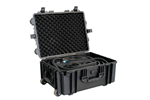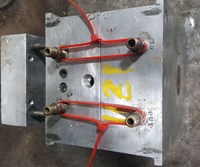Improve and Simplify Wire EDM
A CAD/CAM system with dedicated wire EDM functionality should allow the user to select a specific machine from within the system and apply the conditions to the machining operations.
An integrated CAD/CAM system is recommended when using wire EDM to machine high levels of geometric complexity in molds. The system’s design (CAD) tools often compliment the manufacture (CAM) tools, and they are developed specifically to meet and solve the needs and requirements of the industry using them.
A benefit of an integrated system is quick turnaround if a change to the part’s design is required. The change can be made in CAD, and then the CNC machine code is automatically regenerated by the CAM functions from within the single software solution, often by the same person.
Although extremely accurate and reliable, the wire EDM process itself is also relatively slow. Depending on its complexity, a single mold plate could require several days of machining to achieve the finished result.
One of the most important features of a CAD/CAM system for wire EDM is the ability to control the cutting order or strategy of programs with multiple apertures (inserts, core pins, lifters, etc.). This is because the wire passes right through the workpiece, thereby producing drop-out parts that are completely detached from the main billet of material.
The process is so reliable that you can run the machine without operator intervention for a long time. One way of achieving this is to program a small tag on each aperture in the CAM system so that the slug does not fall out of the workpiece and cause the machine to stop. To take it one step further, you can select a CAM strategy that not only adds a small tag to each aperture, but also adjusts the cutting path to cut every aperture and leave its tag, possibly unmanned overnight. The tags can then be cut off individually in the morning when an operator is present.
Because wire EDM is often a multiple-cut discipline that requires the user to input dozens of parameters, another critical feature of a CAD/CAM system with dedicated wire EDM functionality is the user’s ability to select specific machine technology (offset values, power settings, flushing registers, etc.) from within the system and apply the conditions to the machining operations.
Some CAM systems integrate cutting databases, often supplied by the machine tool manufacturer or imported from the machine tool. These settings allow the user to select criteria such as the required surface finish of the component, which then enables the system to automatically choose the correct machining conditions from manufacturer-supplied data. Automating this process reduces the occurrence of user input error, and therefore minimizes damage or scrapping of components.
The importance of a dedicated CAD/CAM solution for wire EDM cannot be overemphasized when dealing with automated, unattended and complex situations.
Related Content
-
How to Improve Your Current Efficiency Rate
An alternative approach to taking on more EDM-intensive work when technology and personnel investment is not an option.
-
Initial Pellet Contact is the Screw
This summer, let’s get back to the basics. For this summer school basics series, Pellet to Part explores each stage of the plastic injection molding process. This week: the machine’s reciprocating screw, which is often misunderstood and applied to the process incorrectly.
-
Three Good Reasons to Switch from Three- to Five-Axis Machining in Moldmaking
Five-axis machining technology is a great tool in the moldmaker toolbox.















